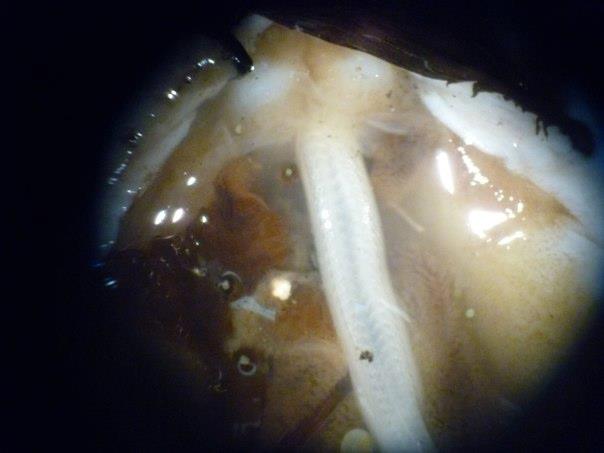Internal Anatomy
 Digestion Digestion
Due a diet consisting solely of algae, the digestive tract of the elephant slug is relatively simple. The mouth is fitted with a simple grazing radula – a toothed, chitinous tube often compared to a tongue – which is used to scrap algae from rocks. Once ingested, the algae enters a long gastric cecum and eventually into the stomach where the food and mineral particles are digested. Cilia sort digested food from indigestible particles which move to the intestine for disposal.
Respiration
The elephant slug, like most fissurellidae possess a primitive respiratory system. Water is sucked through a slit in the posterior (back) end and passed over two primitive gills. Once gas exchange has occurred, the water is pumped out the rectum or anus. Like all gastropods, transportation of oxygen occurs through the cellular matrix known as hemocoel, rather than through arteries and blood vessels as can be found in humans. Muscles and organs are bathed in oxygen-rich blood, pumped around the body by a simple heart.
Nervous system
The nervous system of the elephant slug is cephalized - meaning nerve cells are concentrated towards one end (usually the head) - and bilaterally symmetrical. This cephalisation and concentration of nerve cells means that the elephant slug interacts with the environment based on certain stimuli such as food, darkness, predators, or other conspecifics. Such an advanced nervous system allows the elephant slug to process information gathered from its many sensory organs such as its foot, mantle, tentacles, and eyes. Although this seems like a basic function of most animals, cephalisation is responsible for the large variation of organisms seen today. |